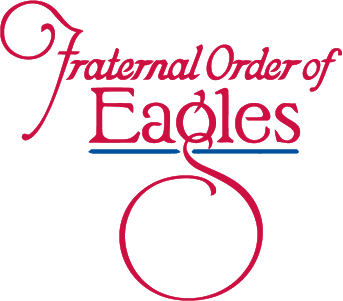New Member Surveys
In an effort to better provide our Aeries and Auxiliaries with the information they need to succeed, the Grand Aerie is conducting monthly surveys of recently installed members to learn more about why they’ve joined, what they expect to gain from their first year of Membership and how we can tailor or efforts to better retain members after their first year.
What We’ve Learned
- Person-to-person recruiting is our most effective avenue of bringing in new members. We should continue to focus on encouraging interaction and developing tools to use in those interactions to help bring in new members.
- Most expressed a desire to just make friends and enjoy the faternal aspect. I think it would be beneficial to encourage our members not to push new members into serving officer positions before they’re ready. Obviously, there are exceptions to the policy, but overall, it seems more beneficial to allow them to ingratiate themselves within the Aerie/Auxiliary before asking them to take on additional responsibility.
- The atmosphere within the Aerie plays a huge role peoples’ decision making. We have to do everything within our power to limit in-fighting and try to create a positive family atmosphere in as many Aeries as possible, as this is obviously a key influencer in decision making.
- 80% are first-time members. While many believe that re-enrollees are key to growth, the numbers show that reaching out to brand new members is highly effective in helping our numbers grow.
Under-45 Surveys
In October 2018, the Grand Aerie conducted surveys of all members Under 45 years of age and all Officers Under 45, to help better understand how we can recruit younger members to join the Fraternal Order of Eagles. We encourage all of our Aeries and Auxiliaries to look over the results below and the raw data in the column to the right in order to help shape their future membership recruitment strategies.
What We’ve Learned
- The majority of our younger members are between 36 and 56. The younger we skew, the lower our success rate becomes.
- The biggest issue still seems to be that many of our older members are not receptive to younger people joining. Many open-ended responses reflect a poor attitude towards younger people and in some cases, taking steps to actively prevent them from joining. We also have many that will permit them to join but then try to silence them and do not allow them to contribute or be heard to help bring more younger people in.
- Both groups felt that we have a negative image as a club for older people and that prevents younger people from joining. Most of the remedies suggested were centered around catering more events toward families or younger people to engage them within the Aerie and not simply asking them to come sit and have a drink/meal. These ideas like game nights, family movie nights, sporting event parties, etc. still place into the drinks/food aspect, but integrate other activities that keep the younger people engaged and spending more time physically present.
- For the members who aren’t officers, time commitments were overwhelmingly the largest factor in their decision to not hold office. Most of them commented on how they have children with school activities, sporting events, etc. and the meetings are either too early or they simply don’t have time at all for them.
- In terms of why younger people aren’t following their peers lead in joining, indoor smoking and generally unpleasant physical condition of Aeries appears to be a significant issue.
- On the issue of communications, most Aeries are communicating in at least some capacity, with only 10% responding that there’s no communication. The Survey shows a pretty big increase in social media involvement on the local level.
- Many on both levels feel that an increase in social media advertising would be of tremendous help in rectifying the reputation of the Aeries/Auxiliaries on the local level. With more young people engaging on social media every day, it seems to be a good idea for us to begin further exploration into how we can better do this in our most populous areas.
Survey Data
- April 2023 Data
- February/March 2023 Data
- January 2023 Data
- December 2022 Data
- November 2022 Data
- October 2022 Data
- September 2022 Data
- August 2022 Data
- July 2022 Data
- June 2022 Data
- May 2022 Data
- April 2022 Data
- March 2022 Data
- February 2022 Data
- January 2022 Data
- December 2021 Data
- November 2021 Data
- October 2021 Data
- September 2021 Data
- August 2021 Data
- July 2021 Data
- June 2021 Data
- May 2021 Data
- April 2021 Data
- March 2021 Data
- February 2021 Data
- January 2021 Data
- December 2020 Data
- November 2020 Data
- October 2020 Data
- September 2020 Data
- August 2020 Data
- July 2020 Data
- June 2020 Data
- May 2020 Data
- April 2020 Data
- March 2020 Data
- February 2020 Data
- January 2020 Data
- December 2019 Data
- November 2019 Data
- October 2019 Data
- September 2019 Data
- August 2019 Data
- July 2019 Data
- June 2019 Data
- May 2019 Data
- April 2019 Data
- March 2019 Data
- February 2019 Data
- January 2019 Data
- December 2018 Data
- November 2018 Data
- October 2018 Data
- September 2018 Data
- August 2018 Data
- July 2018 Data
- June 2018 Data
- May 2018 Data
- April 2018 Data
- March 2018 Data
- February 2018 Data
- January 2018 Data
- December 2017 Data
- November 2017 Data
- October 2017 Data
- September 2017 Data
- August 2017 Data
- July 2017 Data
- June 2017 Data
- May 2017 Data
- April 2017 Data
Dropped Survey
Under 45 Surveys
